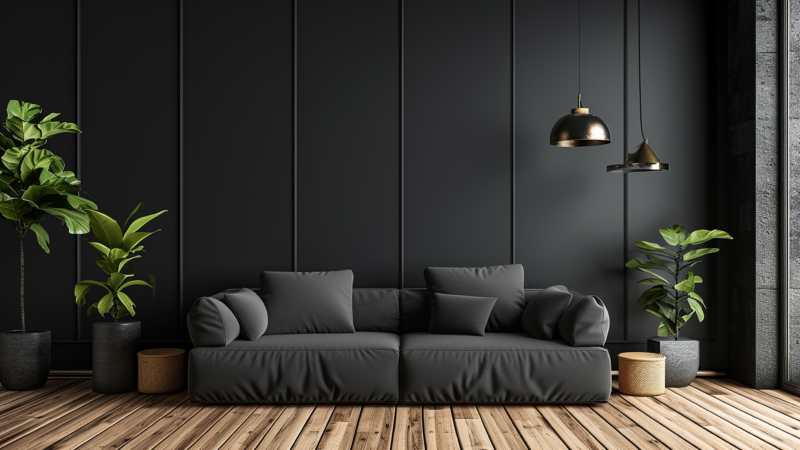Furniture plays an essential role in defining the character, comfort, and functionality of your home. Whether you live in a cozy apartment or a spacious house, your choice of furniture reflects your lifestyle and personality. Beyond aesthetics, furniture contributes to organization, relaxation, and practicality — making it one of the most important investments you’ll make for your living space.
In this comprehensive guide, we’ll explore everything you need to know about choosing, arranging, and maintaining furniture, along with useful tips to enhance every room in your home.
1. The Importance of Furniture in a Home
The perfect furniture turns an ordinary house into a warm and welcoming home. It brings structure, style, and comfort while supporting your daily activities. Here are a few reasons why furniture is so important:
-
Comfort and Functionality: Sofas, beds, chairs, and tables provide comfort and support for work, rest, and leisure.
-
Organization: Storage furniture, such as shelves, cabinets, and wardrobes, helps keep spaces tidy and efficient.
-
Aesthetic Appeal: Well-chosen furniture enhances a room’s design, color scheme, and overall harmony.
-
Personal Expression: Your furniture reflects your taste, lifestyle, and preferences — from classic wood designs to modern minimalism.
Investing in quality furniture ensures both durability and timeless style, creating a space that feels truly your own.
2. Different Types of Furniture for Every Room
Each room in your home serves a different purpose, and the right furniture can maximize its function and comfort.
a. Living Room
The living room is the heart of the home — a space for relaxation and gathering. Essential furniture includes:
-
Sofas and Sectionals: Choose a design that suits your layout and family size.
-
Coffee Tables: Combine practicality with visual balance.
-
TV Units and Storage: Keep entertainment areas neat and organized.
-
Accent Chairs or Ottomans: Add character and extra seating.
b. Bedroom
A restful bedroom requires furniture that promotes comfort and organization:
-
Bed Frame and Mattress: Invest in quality for good sleep and back support.
-
Nightstands: Convenient for lamps, books, or personal items.
-
Wardrobes and Dressers: Keep clothing and accessories neatly stored.
-
Mirrors: Enhance light and make smaller rooms feel larger.
c. Kitchen and Dining Area
This area is where meals and memories are shared:
-
Dining Table and Chairs: The centerpiece of your dining space; choose the right size for your family.
-
Cabinets and Sideboards: Provide extra storage for dishes and cutlery.
-
Bar Stools: Great for kitchen islands or breakfast bars.
d. Home Office
More people are working from home, making a dedicated office area essential:
-
Desk: Choose one with enough workspace for your computer and documents.
-
Ergonomic Chair: Essential for comfort and posture.
-
Bookshelves or File Cabinets: Keep documents and supplies organized.
e. Outdoor Areas
Patios and gardens can also benefit from stylish and functional furniture:
-
Outdoor Tables and Chairs: Weather-resistant materials like rattan or aluminum are best.
-
Lounge Sets or Hammocks: Ideal for relaxing outdoors.
-
Umbrellas or Shade Structures: Add comfort and sun protection.
Selecting furniture that fits the size, purpose, and theme of each space enhances comfort and cohesion throughout your home.
3. Factors to Consider When Choosing Furniture
Buying furniture isn’t just about style — it’s about finding pieces that meet your lifestyle and practical needs. Here’s what to keep in mind:
a. Size and Proportion:
Measure your space before purchasing to ensure everything fits properly. Avoid overcrowding; each piece should have enough room to breathe.
b. Material and Durability:
Different materials offer varying levels of strength and maintenance needs. Solid wood is long-lasting, while metal and glass provide modern appeal.
c. Comfort and Functionality:
Prioritize comfort, especially for pieces used daily like sofas, beds, and chairs. Seek out ergonomic designs that support proper posture and provide lasting comfort.
d. Style and Design:
Your furniture should reflect your personality and complement your home’s architecture. Choose between modern, traditional, rustic, or minimalist styles.
e. Budget:
Quality furniture is an investment. Choose well-made pieces that offer long-term value rather than focusing solely on price.
f. Sustainability:
Eco-friendly furniture made from recycled or responsibly sourced materials supports environmental conservation and healthier living.
4. Furniture Arrangement: Creating Balance and Flow
How you arrange your furniture affects the comfort and usability of your rooms.
a. Define Focal Points:
Place main pieces (such as a sofa or bed) around focal points, such as a fireplace, window, or TV.
b. Ensure Movement Space:
Leave at least 2–3 feet of walking space around major furniture pieces for easy movement.
c. Use Symmetry and Balance:
Symmetrical arrangements create harmony, while asymmetrical setups can feel modern and dynamic.
d. Lighting Considerations:
Arrange your furniture to take full advantage of the natural light available in the room. Use lamps and overhead lights to enhance ambiance.
e. Multi-Functional Furniture:
In smaller spaces, use furniture that serves multiple purposes — like a storage ottoman or sofa bed.
Proper arrangement ensures your home feels open, welcoming, and practical.
5. Furniture Materials and Their Maintenance
Different materials require specific care to maintain their look and longevity.
a. Wood:
-
Clean regularly with a soft cloth.
-
Use coasters to prevent water rings.
-
Polish occasionally to retain shine.
b. Leather:
-
Wipe spills immediately.
-
Use leather conditioner every few months to prevent cracking.
-
Avoid direct sunlight to prevent fading.
c. Fabric Upholstery:
-
Vacuum regularly to remove dust.
-
Use gentle cleaning solutions for stains.
-
Rotate cushions for even wear.
d. Metal:
-
Wipe with a damp cloth to remove fingerprints or rust spots.
-
Apply anti-rust coating for outdoor pieces.
e. Glass:
-
Clean with a streak-free cleaner or vinegar solution.
-
Handle carefully to avoid scratches.
Proper maintenance extends the life of your furniture and keeps your home looking well cared for.
6. Sustainable Furniture Choices
Modern homeowners increasingly value sustainability when selecting furniture. Here are ways to make eco-conscious choices:
-
Buy quality, not quantity: Durable furniture reduces waste.
-
Choose renewable materials: Bamboo and reclaimed wood are environmentally friendly.
-
Repurpose and recycle: Restore vintage furniture instead of buying new.
-
Support ethical brands: Look for certifications like FSC (Forest Stewardship Council).
Eco-friendly furniture choices benefit both your home and the planet.
7. Seasonal Furniture Care Tips
Changing weather can affect your furniture’s durability. Follow these seasonal tips for protection:
a. Spring and Summer:
-
Clean upholstery and polish wooden surfaces.
-
Protect outdoor furniture from sun damage using covers or shade.
-
Rotate rugs and cushions to avoid uneven fading.
b. Autumn and Winter:
-
Maintain indoor humidity to prevent wood from cracking.
-
Keep furniture away from direct heat sources.
-
Store outdoor pieces indoors or under waterproof covers.
These small efforts prevent seasonal damage and maintain your furniture’s beauty all year round.
8. The Future of Furniture: Trends and Innovations
The furniture industry continues to evolve with new designs and technologies. Current trends include:
-
Smart Furniture: Built-in charging ports, adjustable desks, and integrated lighting.
-
Minimalist Designs: Clean lines and neutral colors that promote calm spaces.
-
Modular Furniture: Pieces that can be rearranged to suit changing needs.
-
Natural Materials: An emphasis on sustainable, organic textures like rattan and cork.
-
Compact Solutions: Space-saving designs for urban living.
Embracing innovation allows homeowners to combine functionality with style.
9. How to Extend the Life of Your Furniture
With proper care, your furniture can last for decades. Here’s how to protect your investment:
-
Avoid dragging furniture across the floor — lift instead.
-
Use felt pads under legs to prevent scratches.
-
Tighten screws and joints annually.
-
Keep pieces out of direct sunlight when possible.
-
Schedule regular deep cleaning or professional maintenance for valuable items.
These simple habits ensure your home stays beautiful and comfortable over time.
Conclusion
From design to durability, furniture plays a vital role in every aspect of home living. It supports your comfort, defines your style, and enhances the overall functionality of your space. Choosing the right pieces, maintaining them properly, and arranging them thoughtfully can transform your home into a balanced, inviting, and efficient environment.
Whether you prefer modern simplicity or classic charm, investing time in understanding your furniture needs will always pay off in the form of comfort, beauty, and lasting value.
FAQs About Furniture
1. How often should I replace furniture?
High-quality furniture can last many years — even decades — with proper care. Replace only when it becomes structurally weak or no longer suits your needs.
2. What materials are best for durability?
Solid wood, metal, and high-quality leather are known for longevity. Fabric upholstery is comfortable but requires more regular maintenance.
3. How can I protect wooden furniture from damage?
Keep it away from moisture, use protective pads, and polish occasionally with natural oil or wax.
4. Is it better to buy custom or ready-made furniture?
Custom furniture fits your space perfectly and reflects your style, but ready-made options are often more affordable and faster to obtain.
5. What’s the best way to clean fabric sofas?
Vacuum regularly and use a gentle fabric cleaner for stains. Always check the manufacturer’s label before applying any product.
6. How can I make my small living room look bigger with furniture?
Use lighter colors, mirrors, multi-functional furniture, and avoid bulky designs that take up too much floor space.
7. How do I choose the right furniture style for my home?
Consider your home’s architecture, color palette, and personal taste. Mix textures and materials for a balanced, timeless look.

